Pico Breakout Garden Pack
by Pimoroni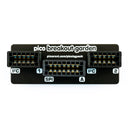



An easy, solderless, swappable way to use breakouts with your Raspberry Pi Pico - add up to three Pimoroni breakouts (2 x I2C and 1 x SPI) to the sturdy slots and get coding and creating!
Pico Breakout Garden Pack gloms onto the back of your Pico and lets you connect up to three of our extensive selection of Pimoroni breakouts. Whether it's environmental sensors so you can keep track of the temperature and humidity in your office, a whole host of little screens for important notifications and readouts, and, of course, LEDs. Scroll down for a list of breakouts that are currently compatible with our C++/MicroPython libraries!
The three sturdy black slots are edge connectors that connect the breakouts to the pins on your Pico. There's one slot for SPI breakouts (like our 0.96" LCD Breakout or 1.12" SPI OLED Breakout), and two slots for I2C breakouts. Because I2C is a bus, you can use multiple I2C devices at the same time, providing they don't have the same I2C address (we've made sure that all of our breakouts have different addresses, and we print them on the back of the breakouts so they're easy to find).
As well as being a handy way to add functionality to your Pico, Breakout Garden is also very useful for prototyping projects without the need for complicated wiring, soldering, or breadboards, and you can grow or change up your setup at any time.
If you need more than three breakouts, you might be interested in our Pico Breakout Garden Base. If you want to use other Pico Packs with Pico Breakout Garden Pack, check out Pico Omnibus and Pico Decker!
Please note that breakouts are sold separately! A Raspberry Pi Pico is not included - click here if you'd like to buy one.
Features
- Three sturdy edge-connector slots for Pimoroni breakouts
- 2x I2C slots (5 pins)
- 1x SPI slot (7 pins)
- Female headers for attaching to Raspberry Pi Pico
- 0.1” pitch, 5 or 7 pin connectors
- Reverse polarity protection (built into breakouts)
- Fully assembled
- Compatible with Raspberry Pi Pico (and other pin-compatible boards)
- Schematic
About Pico Breakout Garden
Because of the way that I2C (the protocol that Breakout Garden uses) works, it doesn't matter which slot on the Breakout Garden that you plug your breakout into. Each I2C device has an address (you'll see it on the back of each breakout) that it uses to identify itself to other I2C devices, so it's effectively saying "Hey, it's me, Bob!"
We've built reverse polarity protection into our Pimoroni breakouts, meaning that there's no magic blue smoke if you accidentally plug one in the wrong way round. However, the correct way to plug them in is to make sure that the labels on the pins on your breakout and the labels on each Breakout Garden slot match up.
The markings on the base will show you which way round to plug in your Pico - just match up the USB port with the markings on the board.
Pico Breakout Compatibility
We're in the process of writing C++ / MicroPython drivers for as many of our breakouts as possible - here's a list of the breakouts that are currently supported. If you download the most recent version of our custom MicroPython uf2, it will have all these drivers included.
- 1.54" SPI Colour Square LCD (240x240) Breakout
- 1.3" SPI Colour Round LCD (240x240) Breakout
- 1.3" SPI Colour Square LCD (240x240) Breakout
- 0.96" SPI Colour LCD (160x80) Breakout
- LED Dot Matrix Breakout
- LTR-559 Light & Proximity Sensor Breakout
- 11x7 LED Matrix Breakout
- 5x5 RGB Matrix Breakout
- SGP30 Air Quality Sensor Breakout
- Trackball Breakout
- AS7262 6-channel Spectral Sensor (Spectrometer) Breakout
- RGB Encoder Breakout
- RGB Potentiometer Breakout
- IO Expander Breakout
- MICS6814 3-in-1 Gas Sensor Breakout (CO, NO2, NH3)
- MSA301 3DoF Motion Sensor Breakout
- RV3028 Real-Time Clock (RTC) Breakout
- BME680 Breakout - Temperature, Pressure, Humidity & Gas Sensor
- BME688 4-in-1 Air Quality Breakout (Gas, Temperature, Pressure, Humidity)
- BME280 Breakout - Temperature, Pressure, Humidity Sensor
- BMP280 Breakout - Temperature, Pressure and Altitude Sensor
- BH1745 - Luminance & Colour Sensor Breakout
- PMW3901 Optical Flow Sensor Breakout
- PAA5100JE Near Optical Flow SPI Breakout
If your breakout's not yet on the list, you might find Pico-compatible drivers for it in CircuitPython!
Please note that Breakout Garden Pack does not have I2C pull-up resistors. All of our breakouts have their own pull-ups on board, but you may run into problems if you're using CircuitPython and third party breakouts that do not have their own pull-ups.
Getting Started
The most straightforward way of getting started with Pico Breakout Garden Pack is by installing our custom MicroPython build on your Pico - there's a tutorial on how to get set up here.
You can find C examples here and MicroPython examples here.
About Raspberry Pi Pico
Raspberry Pi Pico is a flexible, low cost microcontroller development board from the folks at Raspberry Pi, based on their very own chip - the RP2040. It's easily programmable over USB with C/C++ or MicroPython, and ideal for using in all sorts of physical computing projects, devices and inventions - we're so excited to see what you make with it!
We've called our Pico-sized add-ons packs, as they're designed to attach to the back of your Pico as if it were wearing a very stylish backpack (or a miniature jet pack, if you prefer). We've also got Pico bases (larger add-on boards with a space to mount your Pico on top) and some other boards that let you do interesting hackerly things like using multiple packs at once - click here to view them all!
Your Pico will need to have male headers soldered to it (with the pins pointing downwards) to attach to our add-on boards.
-
Pico Breakout Garden Pack
PIM547£6.25
Add a Pico (or compatible) board
Don't forget the headers!
-
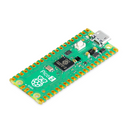 Raspberry Pi Pico 2+ £4.00
Raspberry Pi Pico 2+ £4.00 -
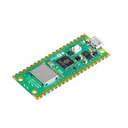 Raspberry Pi Pico 2 W+ £5.50
Raspberry Pi Pico 2 W+ £5.50 -
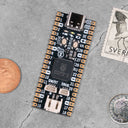 Pimoroni Pico LiPo 2+ £12.50
Pimoroni Pico LiPo 2+ £12.50 -
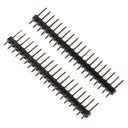 Pico Header Pack+ £1.50
Pico Header Pack+ £1.50
Shop with confidence – we've been serving the hobbyist electronics, Maker, and retro gaming communities since 2012.
- Satisfaction or refund guarantee
- Worldwide shipping via mail or courier
- 57,000+ customer reviews
- Secure website and payments




